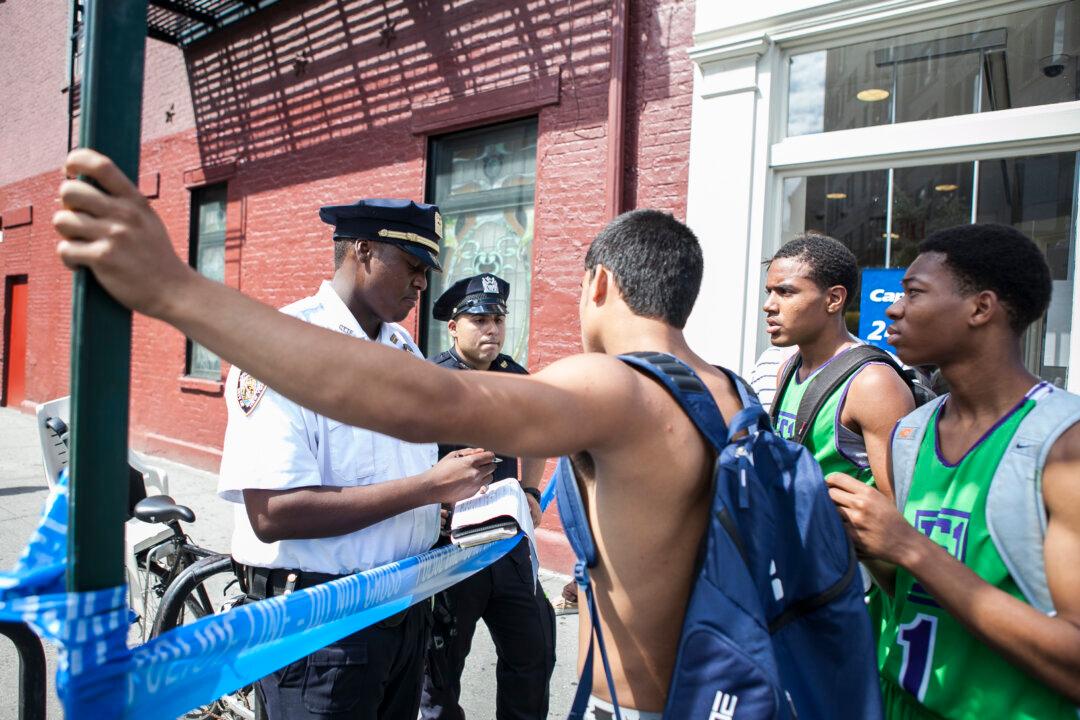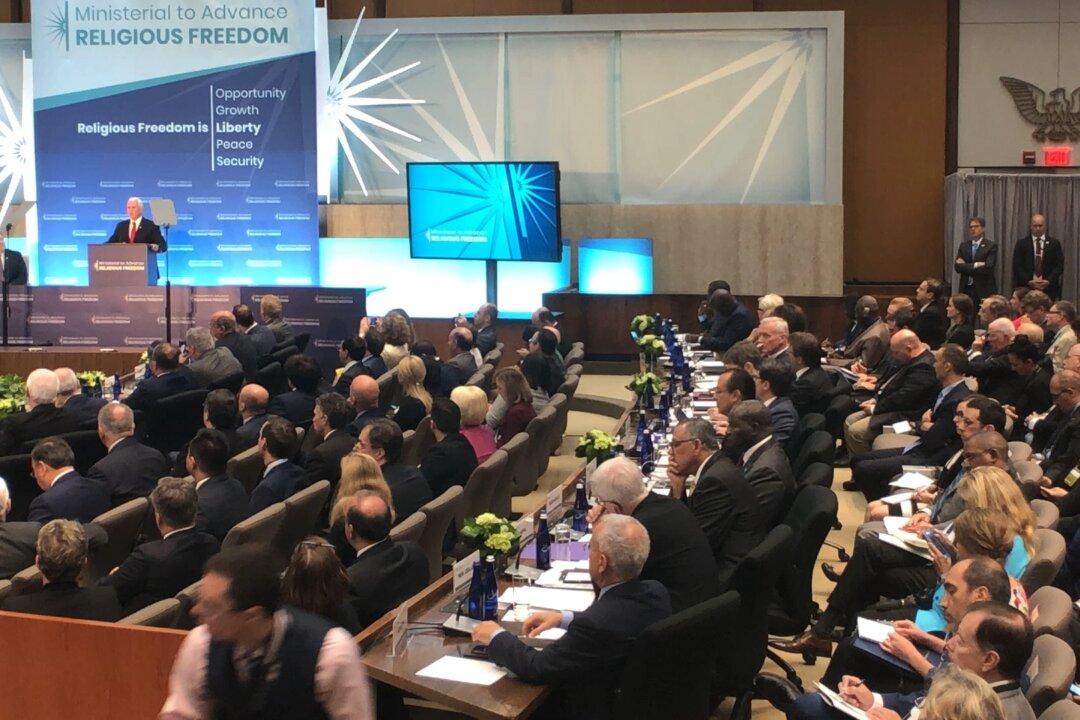WASHINGTON—The use of stop-and-frisk and heavy police presence in high crime areas can reduce crime, but these practices are also known to produce negative effects in the community at large. Where stop-and-frisk by police is most intense, the reaction of pedestrians is often one of resentment and feeling it is unfair.
We saw this issue manifest in the protests, public debate, and lawsuits in New York City, which eventually had to terminate its aggressive stop-and-frisk policy.
The Urban Institute on Oct. 15 held a discussion on this policy from a panel of three experts on policing, each with an impressive number of years of personal experience. One panelist was a current police chief, another panelist was a former police chief, and the third was a 25-year police veteran. The panel looked at how police actions can control crime and ensure public safety while simultaneously earning the respect and trust of the community.
The panel also commented on the publication of a “guide” to law enforcement, “Stop-and-Frisk: Balancing Crime Control with Community Relations.” It was written by the Urban Institute and released online the same day as the panel discussion by the Office of Community Oriented Policing Services, in the Department of Justice, which provided the grant for it.
Stop-and-Frisk
The guide defines stop-and-frisk as police officers routinely and intensively using “stops and subsequent frisks and searches as part of everyday policy.”
At one level, no one can object to a police officer stopping a pedestrian briefly if the officer reasonably suspects that the person is engaged in criminal activity, said Ronald L. Davis, director of the Office of Community Oriented Policing Services at the U.S. Department of Justice.
Dr. Davis was police chief of East Palo Alto, Calif., which was once called the murder capital of the United States. Over a six-year period crime decreased more than 20 percent overall during his time as chief.
Further, if the officer has a reasonable suspicion that the stopped individual is armed, the officer may also conduct a limited pat-down search (“frisk”) in order to protect the officer’s safety or the safety of the public, said Davis.
The quick frisk for weapons is not a “search,” which is more invasive. The guide states, “To conduct a full search of an individual’s person and/or property, officers must act on probable cause, a search warrant, or consent from that individual.”
Davis asked, “[Just because] I can [legally] stop someone and frisk, should I?”
He said that trust and confidence are vital to ensuring public safety, but that trust can be undermined by programs like stop-and-frisk.
“If you engage in activities that compromise trust, then you lose a lot of legitimacy,” he said.
Davis wrote a letter to his police colleagues to accompany the guide. He wrote, “We know public safety is measured not simply by the absence of crime but also by the presence of fairness and justice.”
Dr. Tracie L. Keesee, cofounder and director of outreach, Center for Policing Equity, University of California Los Angeles, said, “Stop-and-frisk opens the doors to a larger conversation on how to police.”
Lanier Blasts ‘Zero-Tolerance’ Theory
“When you use stop-and-frisk as a tactic, you have a problem,” said Cathy L. Lanier, who has been chief of police of the District of Columbia since 2007.







